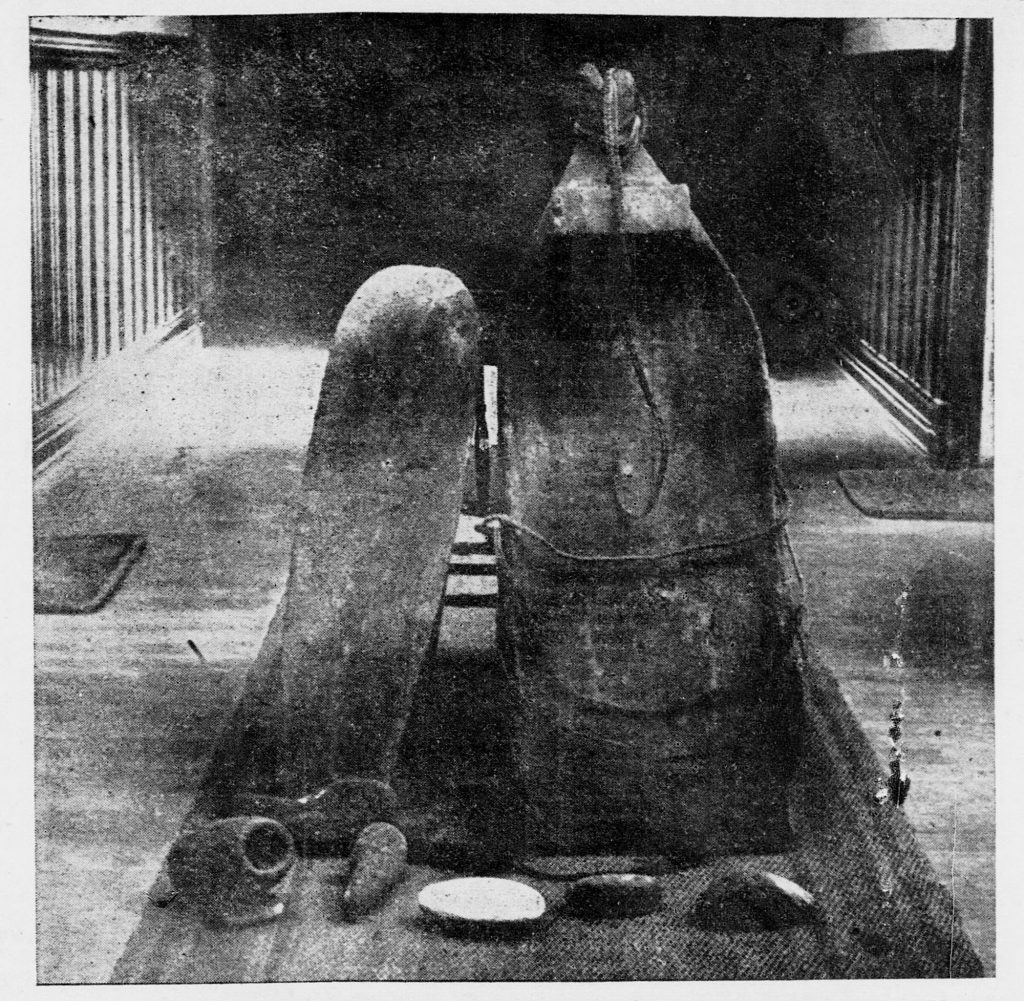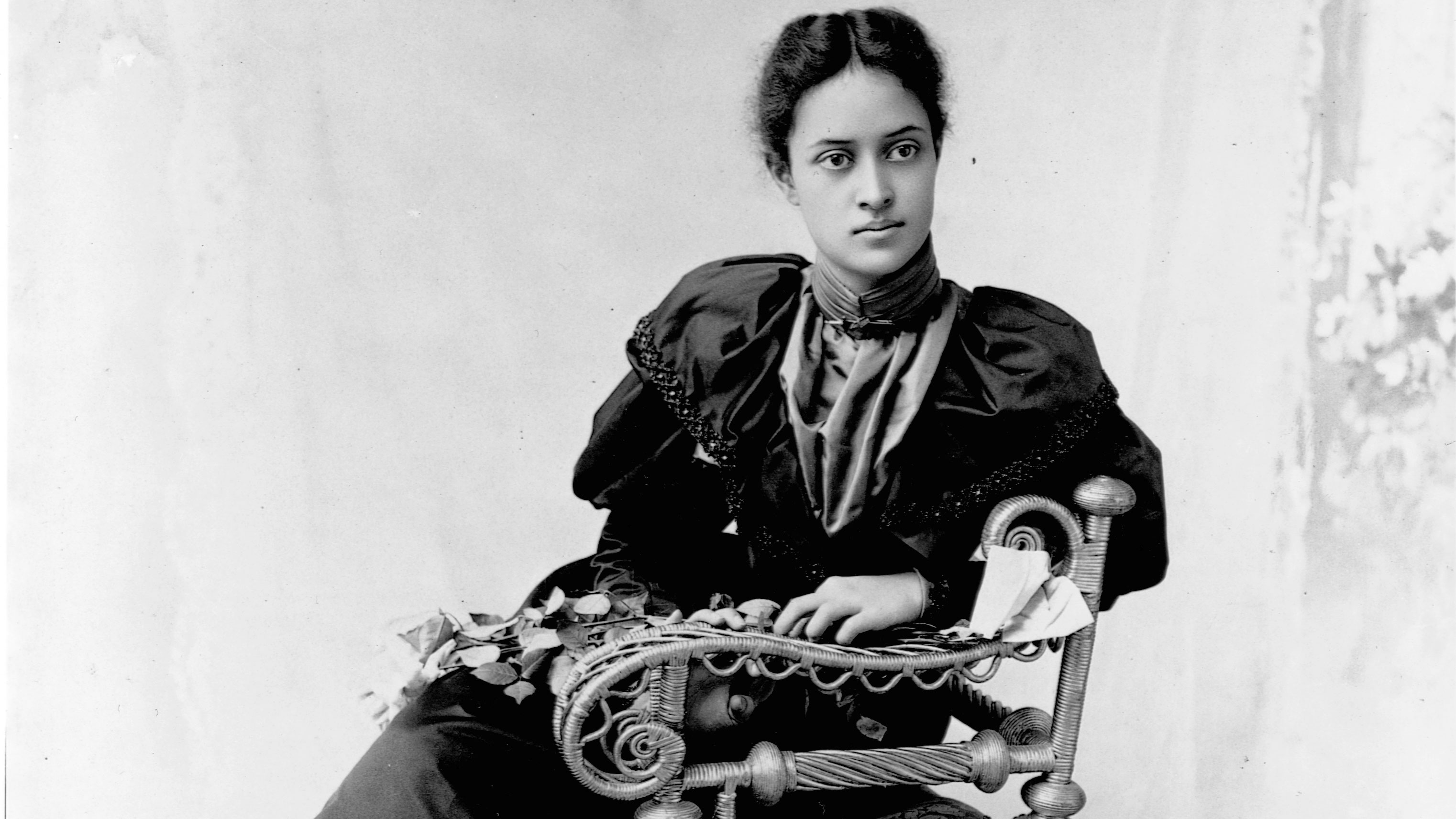
Women (and men) began surfing in Hawaii and other Polynesian islands at least as far back as the 17th century. And while Christian missionaries tried to suppress surfing in the 1800s, a Hawaiian princess helped bring it back long before Gidget and Moondoggie hit the beach.
Prior to European arrival, surfing was a communal activity on the islands for men, women and children of all social classes. Stories about the mythical Maui PrincessKelea describe her as one of the best surfers in the Hawaiian kingdom. The demi-god Mamala is depicted as a half-woman, half-shark who rode the waves. The oldest known papa he’e nalu, or surfboard, dates to the 1600s and comes from Princess Kaneamuna’s burial cave in Ho’okena on the Big Island, according to the Surfing Heritage and Culture Center in San Clemente.

An image printed in a 1905 issue of the Pacific Commercial Advertiser of Honolulu shows the surfboard and sled discovered in Princess Kaneamuna’s burial cave. (Credit: The Library of Congress)
The arrival of American missionaries in the 19th century disrupted the mixed-gender sport as they disapproved of baring skin and gambling during surf contests. When Hiram Bingham’s missionary party first encountered surfers, he wrote: “Some of our number, with gushing tears, turned away from the spectacle.”
Soon, missionaries like Bingham introduced their own games to replace the locals’ “savage” traditions. By 1847, Bingham observed: “The decline and discontinuance of the use of the surfboard, as civilization advances, may be accounted for by the increase in modesty, industry or religion.”
Contrary to Bingham’s claim, surfing never completely went away. And near the turn of the century, it experienced a revival. Modern sports writers often focus on men who contributed to the revival, like three Hawaiian princes who impressedCalifornians with their surfing 1885. But Princess Ka’iulani also helped revive the sport in Hawaii around that time and even brought it to England, where she surfed the English Channel. Tragically, she died at age 23 in 1899 of inflammatory rheumatism, just a year after the United States annexed her kingdom.
Surfing Spreads From Shore to Shore
Surfing continued to spread around the globe into the 20th century. At a 1915 demonstration in Sydney, Australia, Hawaiian Olympic champion Duke Kahanamoku—considered the father of modern surfing—showed 15-year-old Isabel Letham how to surf. “He took me by the scruff of the neck and yanked me on to my feet.’” Letham later recalled, according to the National Library of Australia. “Off we went, down the wave.”
Although she wasn’t the first Australian to surf, she certainly became one of the most famous. She later moved to California and became the director of swimming in San Francisco, where she tried to introduce surf lifesaving methods practiced by Australia’s unselfconsciously-named Manly Life Saving Club. The Manly Club had rebuked her denied her membership because she was a woman, stating that “she would not be able to handle the conditions in rough seas,” notes Molly Schiot in Game Changers: The Unsung Heroines of Sports History.
During and after World War II, surfing became a popular pastime for white, middle-class youth in California. Catchy songs spread the image of the California surfer around the country, and The Beach Boys contributed their absolute most to the cause with song titles, including “Surfin,’” “Surfin’ Safari” and “Surfin’ U.S.A.” Meanwhile, at the movies and on TV, a teenage girl named Gidget rode the waves and hung out with her surfer boyfriend, Moondoggie.
Gidget was a fictional character based on real-life surfer Kathy Kohner. Kohner learned to surf as a teenager in Malibu during the 1950s, and told her father, Frederick, that she wanted to write a book about it. Frederick ended up writing a series of popular Gidget books based on his daughter’s experiences. Filmmakers adapted these into several films and a television series starring Sally Field that spread the image of the surfer girl all over the United States.

Left is surfer Kathy Kohner, who inspired the character Gidget, shown on the right played by Sally Field. (Credit: Ken Hively/Los Angeles Times & ABC Photo Archives/Getty Images)
Still, the predominant image of the surfer was a dude, not a woman, in the 1960s and ‘70s. And unlike in the late 19th and early 20th centuries surfers who brought the sport to the mainland, this “surfer dude” was white. Even so, Native Hawaiian female surfers like Rell Sunn continued to carve out a space for themselves.
Sunn began surfing at age four in Makaha, a small town on Oahu. When she became old enough to compete, she entered men’s contests because there weren’t enough for women. According to The New York Times’ obituary for her in 1998, she almost always made the finals for the men’s events.
“By 1975, she and other pioneers, like Joyce Hoffman and Linda Benson, had inspired enough women to take up the sport that Ms. Sunn was able to help found the Women’s Professional Surfing Association and establish the first professional tour for women,” reported the Times.
Sunn’s achievements earned her the nickname “Queen of Makaha.” But even before that, her given middle name, Kapolioka’ehukai, seemed to hint toward her destiny. In Hawaiian, it means “heart of the sea”—a fitting title for the woman who, in 1977, also became Hawaii’s first female lifeguard.

No comments:
Post a Comment